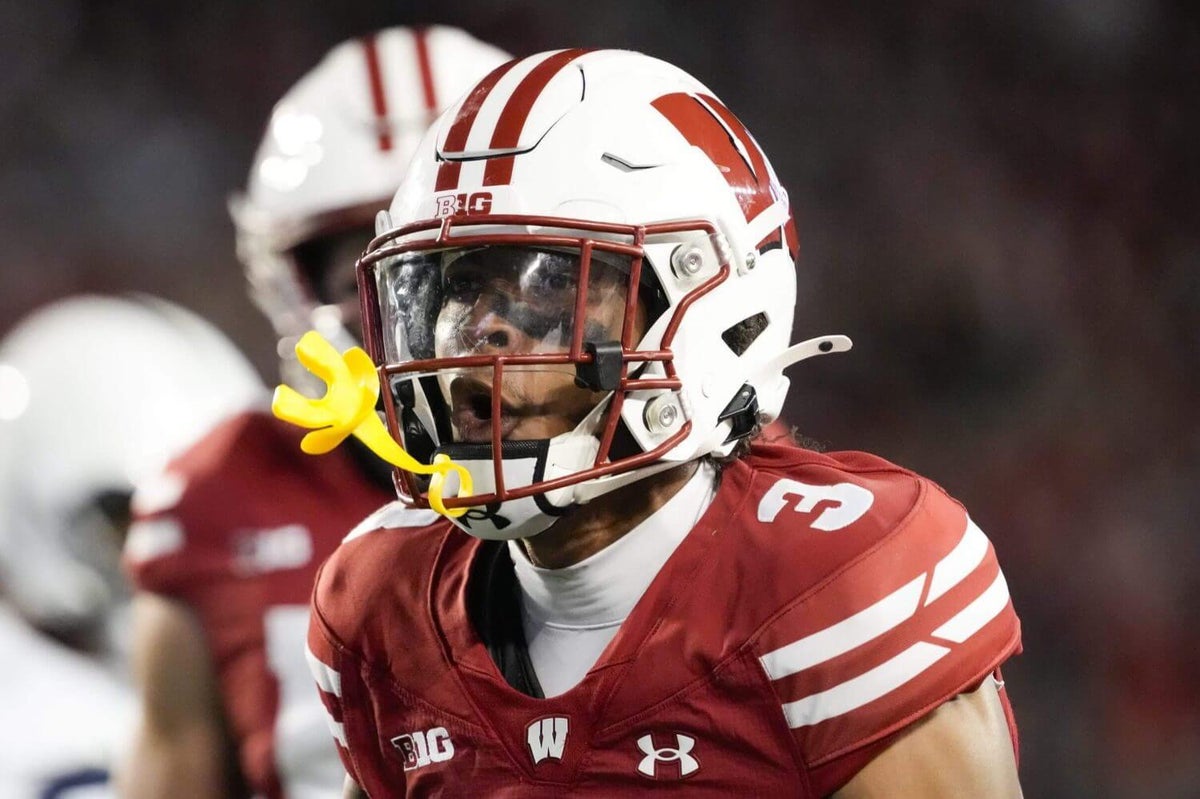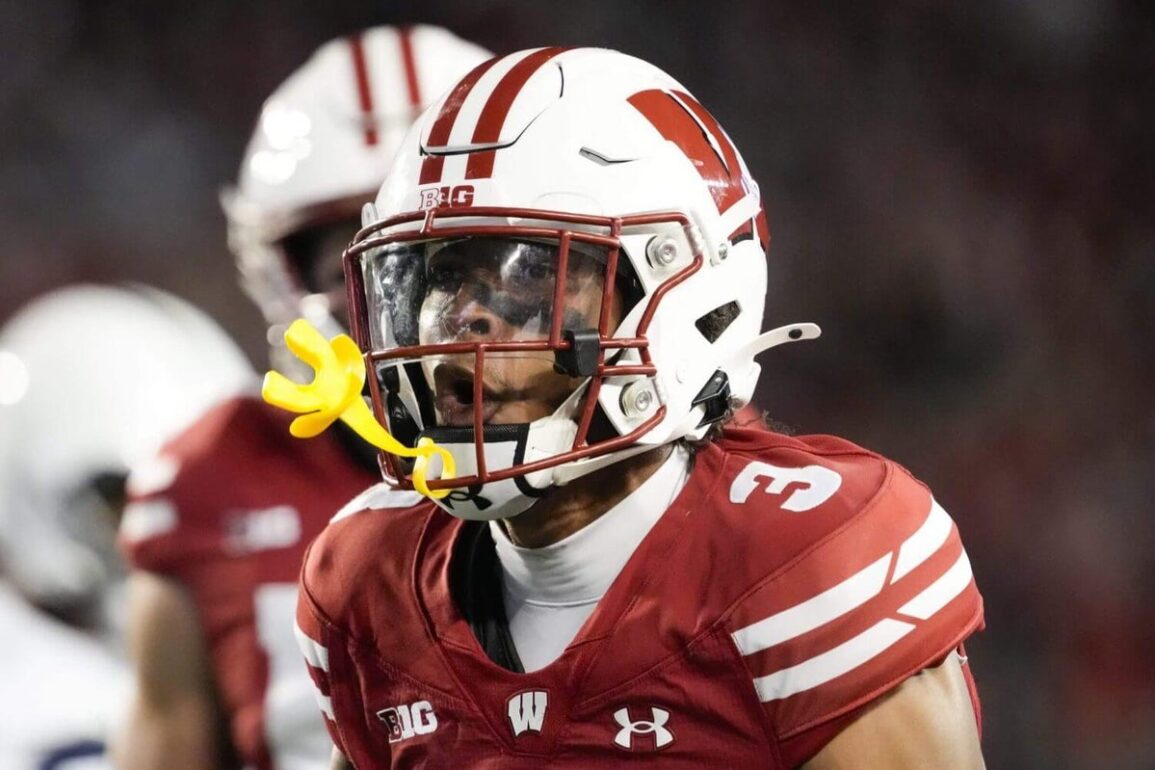
Wisconsin cornerback Nyzier Fourqurean on Thursday was granted a preliminary injunction against the NCAA, granting him a fifth year of playing eligibility for the Badgers in 2025.
The ruling in a U.S. district court in Wisconsin comes just two months after Vanderbilt quarterback Diego Pavia was granted an additional year via preliminary injunction after arguing that the years he spent in junior college outside the NCAA should not count toward his NCAA eligibility. Fourqurean’s case in part argued years spent playing at NCAA Division II schools should not count toward Division I eligibility; he played two years at D-II Grand Valley State before spending the most recent two at Wisconsin.
Advertisement
However, district judge William Conley explained that his ruling was largely due to Fourqurean’s individual circumstances and did not strike down the NCAA’s rule giving athletes five years to play four seasons, absent a waiver. He also did not rule that D-II years should not count toward D-I years. Rather, Conley told the NCAA that its waiver process was too arbitrary and more exceptions should therefore be made for waivers, given the name, image and likeness money at stake for athletes.
While the injunction ruling was narrow in scope, it did not close the door on another case open the NCAA’s eligibility floodgates like Pavia did for junior college players. The NCAA in a statement Thursday disagreed with the ruling and again cited that eligibility rules are created by the member schools.
“The NCAA supports all student-athletes maximizing their name, image and likeness potential, but today’s ruling creates even more uncertainty and may lead to countless high school students losing opportunities to compete in college athletics,” the NCAA said in its statement to The Athletic. “Altering the enforcement of foundational eligibility rules — approved and supported by membership leaders — that are designed to help ensure competition is safe and fair for current and future student-athletes makes a shifting environment even more unsettled. The NCAA and its member schools are making changes to deliver more benefits to student-athletes, but the recent patchwork of state laws and court opinions continues to make clear that partnering with Congress is essential to provide stability for the future of all college athletes.”
Fourqurean’s case was based in part on the fact that he missed fall camp in 2021 following the death of his father. Although he played in 11 games in the 2021 season, he totaled just 155 snaps, a total roughly equivalent to the action of three full games. In addition, Grand Valley State coach Matt Mitchell added that he only played Fourqurean that much due to other injuries on the team.
Advertisement
The waiver case argued that 2021 should essentially be able to be counted as a redshirt year, since Division I allows players to compete in four regular season games and still take a redshirt, more than D-II allows. Fourqurean argued he could make “hundreds of thousands” of dollars in NIL if he could return to UW. The NCAA in December denied Wisconsin’s waiver request.
Conley ruled that the NCAA’s five-year rule is generally seen as anticompetitive but that more consistency in waivers (or more years of eligibility) could be viewed as more procompetitive. College sports leaders have been contemplating allowing a blanket five years of eligibility with no exceptions, which was cited in the ruling.
The NCAA argued in court that college eligibility tied to a student-athlete’s academic progress differentiates it from professional sports like the NFL.
Fourqurean proposed starting the eligibility clock when a player enrolls at a Division I institution, which was deemed a “non-starter” by the court, as it would remove the distinction between college football and the NFL. The judge acknowledged concern over the possibility of opening too many eligibility doors and did not want to go down that road. Not yet, at least.
“If plaintiff’s rule was adopted, it is easy to imagine an 11-year college veteran playing out his final season of college eligibility at age 30, having spent triple the amount of time most students spend in college, and in the process largely destroying defendant’s differentiated product to the point that college football programs would likely become nothing more than a minor league feeder system for the NFL where players develop for years (or even a decade) until they have optimized their chances of being drafted and sticking on an NFL roster. As concerning is the prospect that Division II and Division III football programs would become nothing more than minor league teams for the most powerful Division I football programs.”
Advertisement
Fourqurean sought a preliminary injunction because the deadline to withdraw a player from the NFL Draft is Friday. It remains to be seen whether the continued progression of this case or future similar lawsuits could open up the NCAA to granting a blanket waiver for all former lower-division players as it did for junior college players after the Pavia injunction.
Fourqurean’s return represents a major victory for Wisconsin because it means the Badgers will now bring back both of their starting cornerbacks from last season. Ricardo Hallman, who has 33 career starts and has started all 25 games the past two seasons, will be a fifth-year senior after bypassing the NFL Draft.
Fourqurean had a breakout sophomore season in 2022 at Grand Valley State in which he earned Division II Associated Press First-Team All-American honors. In two seasons at Wisconsin, he has appeared in 24 games with 17 starts, including starts in all 12 games last season. Fourqurean finished the season with 51 tackles, five pass breakups and an interception. His 51 tackles were the third-most among Big Ten cornerbacks during the regular season.
Fourqurean, a native of Mentor, Ohio, told The Athletic last week he had been training in Columbus, Ohio, in preparation for Wisconsin’s pro day on March 7. He also participated in the Hula Bowl in Orlando, Fla., last month. He said the Pavia ruling served as the impetus for Wisconsin and Fourqurean to file suit seeking additional eligibility.
Fourqurean did not immediately respond to a request for comment Thursday night, nor did his lawyer, Michael Crooks.
Thursday’s ruling is another courtroom loss for the NCAA ias it tries to defend its eligibility rules. While this judge did not take down the NCAA to the same level others have, the decision continued a trend of the organization losing more control over enforcing its rules.
“While defendant (the NCAA) frets that the court’s decision will open the floodgates of litigation by encouraging every student-athlete dissatisfied with defendant’s waiver denial to come to court, the injunction entered here does not enjoin defendant’s Five-Year Rule altogether,” Conley wrote. “Instead, it narrowly enjoins defendant from applying the Five-Year Rule against this plaintiff (Fourqurean) without demonstrating that his unique circumstances should not give rise to an exception.”
(Photo: Jeff Hanisch / Imagn Images)
This post was originally published on this site be sure to check out more of their content.



